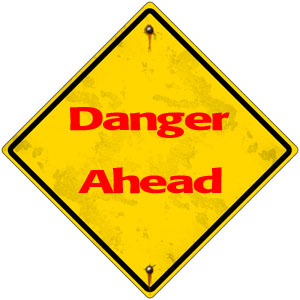 In developing my latest Android app Pumpkin Carver (free), I saved a lot of time and money by using stock – or “royalty free” – artwork for a lot of my graphics. Not only is this a cost-effective method to get high-quality graphics into your app (and promotional materials), it also offers immediate gratification. You can get ready-made artwork and immediately insert it into your application.
In developing my latest Android app Pumpkin Carver (free), I saved a lot of time and money by using stock – or “royalty free” – artwork for a lot of my graphics. Not only is this a cost-effective method to get high-quality graphics into your app (and promotional materials), it also offers immediate gratification. You can get ready-made artwork and immediately insert it into your application.
This is part one of a three part series on licensing for Android app developers. I’ll also be covering considerations for code reuse as well as sharing a number of great image resources that I’ve found and used for this blog and my Android apps.
While I’m not a lawyer and can’t offer counsel, this primer should hopefully point you in the right direction. This guide should help you build better-looking apps with less hassle and cost. That sounds like it could help you earn more income from your Android apps, right?
Licensing?
Hopefully you’re already aware that you can’t just take an image from Google Images and use it in your Android app. Some form of copyright law applies in (I believe) every country that can buy apps on the Android market. If you haven’t checked the license of an image, you’re taking a risk by using it!
You don’t want to be dealing with copyright infringement issues. There’s never a good time for that. At the very least it costs your time, and at the worst it could take your Android apps off of the market and cost you a lot of money. This is one issue that you shouldn’t procrastinate on.
So what can you do? Check the license of images you find. Sometimes you need to ask the author. Since people need to use images all the time, a thriving ecosystem has evolved around royalty-free stock images as well as public domain images.
Royalty-Free
Let’s take a step back and explain what I mean by “royalty-free”. Royalty-free graphics are those you pay for once, but do not have to pay for each time you use it. You have a license to use that image as many times as you need, which is particularly important when the Android world discovers your app and it gets downloaded thousands of times!
Many stock image sites offer royalty-free licenses for their images, with easy purchase options. Do be careful that the license they offer is applicable for you! Some places offer a basic license that’s good for posting an image to your web page, but not good for including in your software.
See below for gotchas and warnings.
Attribution Required
Some images are given away for free by the author, but the license requires that you use proper attribution. That means that you must link back to them and acknowledge their work.
![]() For example under the Creative Commons license, the ‘Attribution’ option (which applies to all CC licenses) requires that you provide proper attribution.
For example under the Creative Commons license, the ‘Attribution’ option (which applies to all CC licenses) requires that you provide proper attribution.
It might not be enough to put a link in your app, you might need to link from a web page. Read carefully!
Public Domain
![]()
The easiest option is of course when the author gives their work up for free into the public domain. No attribution would be required in this case, but it certainly would be nice to do so if they request it.
Note that you can’t assume that anything is in the public domain just because you found a copy of it – even directly from the author’s website. They must explicitly state that their work is free for you to use,
Other options
There are numerous other licensing options that you might encounter in finding assets for your Android app or game. It can be a little time-consuming when you start to figure this out, but it is important. Your future on the Android Market is at stake!
Licensing can be tricky, but don’t forgo the important step of understanding your licensing requirements. After you release your app it’s too late and you could have already sabotaged your app!
Gotchas and Warnings
Beware that many ‘free’ images are licensed only for private use. If commercial use is prohibited (and your Android app is commercial if you stand to make any money at all!) then you’re out of luck. For example, one of the options under Creative Commons is a “NonCommercial” license. If the content is licensed that way, you need to contact the author to get permission.
Be aware that using an image on a website may be considered different than including it in your Android app. You’ll need to read the terms and conditions to find out what is allowed. If the basic license doesn’t allow distribution in software, you might only be able to use the image for your promotional art for the Android Market.
From what I’ve seen, many sites have a very restrictive license for the inexpensive starter price. If that doesn’t cover what you need, the higher-level licenses get extremely expensive. It may be better to shop at a site that has a license that meets your needs (more on that in part 3).
Coming up next
In part two, I cover some considerations when using various types of open-source code in your Android projects.
Then, in part 3 I’ll talk about a few amazing resources that I have been using for inexpensive and free graphics for my apps.
Don’t forget to sign up for my mailing list to get even more tips and resources to help you get your Android apps looking good and earning you money.

